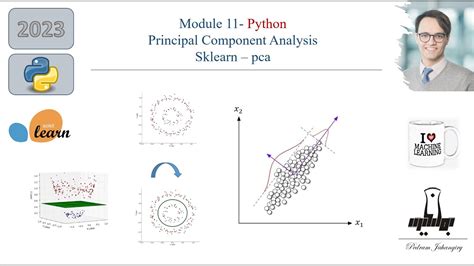Mastering Python Package Installation: A Comprehensive Guide To Getting Started

Python, a versatile and widely-used programming language, offers a vast ecosystem of packages and libraries that enhance its capabilities. Package installation is a fundamental aspect of Python development, enabling programmers to leverage pre-built functionalities and streamline their workflows. This comprehensive guide aims to provide an in-depth understanding of Python package installation, covering various aspects from basic installation methods to advanced techniques and best practices.
Understanding Python Package Installation

Python’s package installation process is pivotal for developers, as it allows them to incorporate additional functionality into their projects efficiently. The Python Package Index (PyPI), a repository hosting thousands of third-party packages, plays a central role in this process. PyPI serves as a hub where developers can search for, download, and install packages, making it an essential resource for Python programming.
The Role of PyPI
PyPI, often referred to as the Cheese Shop, is the official repository for Python packages. It serves as a central hub, hosting a diverse range of packages developed by the Python community. These packages cover a wide spectrum of functionalities, from data analysis and machine learning to web development and scientific computing.
The importance of PyPI lies in its ability to provide a standardized and secure platform for package distribution. Developers can trust that packages hosted on PyPI have been vetted for quality and security, ensuring a reliable and consistent development experience. Additionally, PyPI offers a robust search functionality, making it easy for developers to find the right package for their specific needs.
Package Installation Methods
Python offers several methods for package installation, each catering to different scenarios and user preferences. The most common methods include:
- pip: pip, or "Pip Installs Packages," is the de facto standard package installer for Python. It is included with Python distributions and provides a command-line interface for installing, upgrading, and removing packages. pip is versatile and can install packages from PyPI or local directories.
- venv: venv, short for "virtual environment," is a tool that allows developers to create isolated Python environments. This is particularly useful for managing package dependencies, as each virtual environment can have its own set of packages, independent of the system-wide Python installation. venv is included with Python 3.3 and later versions.
- conda: conda is a package and environment management system, primarily used in scientific computing and data science. It offers a more comprehensive package management solution, allowing users to manage both Python packages and non-Python dependencies. Conda is especially useful for environments with complex dependencies.
Basic Package Installation with pip

pip is the go-to tool for most Python developers when it comes to package installation. It is simple to use and offers a wide range of features for managing packages. Here’s a step-by-step guide to installing packages with pip:
- Ensure pip is Installed: pip is usually included with Python installations, but it's worth checking. You can do this by running the following command in your terminal or command prompt:
If pip is installed, it will display the version number. If not, you can install it by following the official Python documentation.pip --version - Install a Package: To install a package from PyPI, use the following command:
Replacepip install package_namepackage_namewith the name of the package you want to install. For example, to install the popular data analysis librarypandas, you would run:pip install pandas - Verifying the Installation: After installing a package, you can verify its presence by importing it in a Python script or the Python interpreter. For instance:
import pandas print("Pandas is installed!") - Upgrading Packages: To upgrade an already installed package to the latest version, use the
upgradecommand:pip install --upgrade package_name - Removing Packages: To uninstall a package, use the
uninstallcommand:pip uninstall package_name
Advanced Package Installation Techniques

While basic package installation with pip is straightforward, there are situations where more advanced techniques are required. These techniques can help manage complex dependencies, install packages from private repositories, or handle specific package requirements.
Managing Dependencies with Requirements Files
Requirements files are a powerful tool for managing package dependencies. They allow developers to specify the exact versions of packages required for a project, ensuring consistent and reproducible environments. Here’s how to create and use a requirements file:
- Create a Requirements File: Start by creating a text file named
requirements.txtin your project directory. In this file, list the packages and their versions that your project depends on. For example:pandas==1.3.0 scipy>=1.7.1 numpy - Install Packages from the Requirements File: To install all the packages listed in the
requirements.txtfile, run the following command:
This command will install all the packages specified in the file, ensuring that the correct versions are used.pip install -r requirements.txt
Installing Packages from Private Repositories
Sometimes, packages may not be publicly available on PyPI but are hosted on private repositories. In such cases, pip can be configured to install packages from these private sources. Here’s how:
- Configure pip to Use Private Repositories: First, you need to add the private repository's URL to pip's configuration. You can do this by editing the
pip.inifile or by using thepip configcommand. For example, to add a private repository namedmy_private_repowith the URLhttps://private.example.com/simple, run:pip config set index-url https://private.example.com/simple --global - Install Packages from Private Repositories: Once configured, you can install packages from the private repository using the usual
pip installcommand, specifying the package name and the repository name. For example:pip install --index-url https://private.example.com/simple package_name
Handling Package Conflicts
Package conflicts can occur when two or more packages require different versions of the same dependency. This can lead to errors and compatibility issues. To handle such conflicts, pip provides the –no-deps flag, which installs a package without its dependencies. However, this should be used with caution, as it may lead to incomplete or broken installations.
Best Practices for Package Installation

Adhering to best practices when installing packages can significantly enhance the reliability and maintainability of your Python projects. Here are some key practices to follow:
- Use Virtual Environments: Creating isolated virtual environments with venv is a best practice for managing package dependencies. This ensures that each project has its own set of packages, preventing conflicts and making it easier to manage dependencies.
- Keep Requirements Files Up-to-Date: Regularly update your
requirements.txtfile to reflect the current package versions used in your project. This ensures that other developers or team members can easily replicate your environment. - Use Version Constraints: When specifying package versions in your requirements file, use version constraints (e.g.,
==,>=,<) to ensure compatibility and stability. This prevents unexpected behavior caused by major version changes. - Regularly Update Packages: Keeping your packages up-to-date is crucial for security and performance. Regularly run
pip install --upgradeto update all packages to their latest versions. - Document Package Installations: Documenting the package installation process is essential for reproducibility and collaboration. Provide clear instructions on how to install the required packages for your project, including any specific configurations or requirements.
Troubleshooting Common Package Installation Issues

Despite the simplicity of Python package installation, issues can arise. Here are some common problems and their solutions:
Package Not Found
If pip cannot find a package, it’s likely that the package is not available on PyPI or is misspelled. Check the package name and try searching for it on PyPI. If the package is not found, it may be a private package, in which case you’ll need to follow the instructions for installing packages from private repositories.
Dependency Resolution Errors
Dependency resolution errors occur when pip cannot satisfy the package dependencies. This often happens when multiple packages require different versions of the same dependency. In such cases, you can try using the –no-deps flag or manually specifying the dependency versions in your requirements file.
Permission Errors
Permission errors can occur when pip tries to install packages in a system-wide location that requires administrative privileges. To avoid this, use virtual environments or install packages in a user-specific location.
Conclusion

Mastering Python package installation is a crucial skill for any Python developer. By understanding the various installation methods, advanced techniques, and best practices, you can efficiently manage package dependencies and ensure a smooth development experience. Remember to keep your packages up-to-date, use virtual environments, and document your installation processes for better collaboration and reproducibility.
How do I find the latest version of a package on PyPI?
+To find the latest version of a package on PyPI, simply search for the package name on the PyPI website. The search results will display the latest version along with its release date and a list of previous versions.
Can I install multiple packages at once with pip?
+Yes, you can install multiple packages at once with pip by providing a list of package names separated by spaces. For example: pip install package1 package2 package3
What is the difference between pip and pip3?
+
pip and pip3 are different versions of the pip package installer. pip is used for Python 2, while pip3 is used for Python 3. If you’re using Python 3, you can use pip without the 3 suffix.



